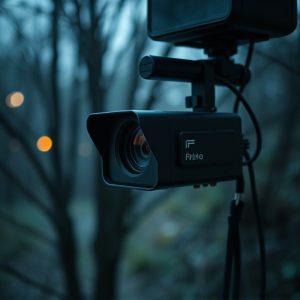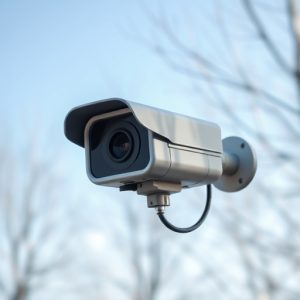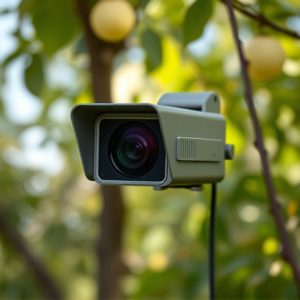Guiding Ethical Elderly Care: Covert Recording Spot Identification & Best Hidden Cameras
Implementing hidden cameras in elderly care facilities requires a careful balance between privacy pr…….
Implementing hidden cameras in elderly care facilities requires a careful balance between privacy protection and comprehensive monitoring. It's crucial to prioritize ethical considerations, full disclosure, and data protection laws. Choosing the 'best' hidden cameras involves selecting discreet devices with advanced features while adhering to regulations. Strategic placement, informed consent, respect for privacy, and regular review of footage are key to effective and ethical use in care settings like nursing homes and assisted living facilities.
In the ever-evolving landscape of elderly care, ensuring safety and well-being while respecting privacy is paramount. This comprehensive guide delves into the world of covert recording spot identification, addressing critical aspects such as understanding privacy concerns, navigating legalities, and selecting the best hidden cameras for effective monitoring. By following ethical installation and use guidelines, caregivers can maintain transparency while leveraging technology to foster secure environments.
- Understanding Elderly Care and Privacy Concerns
- Legal Aspects of Covert Recording in Care Settings
- Choosing the Right Hidden Cameras for Effective Monitoring
- Installation and Use Guidelines for Ethical Surveillance
Understanding Elderly Care and Privacy Concerns
Elderly care facilities and the privacy of residents are paramount considerations, especially when discussing covert recording methods. The use of hidden cameras in such environments raises ethical and legal questions, with strict regulations in place to protect vulnerable individuals. As such, any implementation of surveillance technology must be approached with extreme caution, ensuring it serves a legitimate purpose and respects the autonomy and dignity of elderly residents.
The choice of the ‘best’ hidden cameras for elderly care depends on balancing privacy concerns with effective monitoring. Professional-grade, discreet cameras designed for home security can be adapted for this purpose, offering remote access and high-quality footage. However, these devices must be installed ethically, with full disclosure to residents or their families, and in compliance with local data protection laws, ensuring that the rights of elderly individuals are upheld.
Legal Aspects of Covert Recording in Care Settings
In care settings, such as nursing homes and assisted living facilities, covert recording can be a complex legal issue. While best hidden cameras for elderly care can serve as valuable tools to ensure patient safety and quality of service, they must be used responsibly and ethically. Many jurisdictions have strict regulations regarding privacy and surveillance, particularly in healthcare environments.
Facilities should carefully review local laws and obtain necessary permissions before implementing covert recording systems. It is crucial to inform residents, their families, or guardians about the presence of cameras to maintain transparency and avoid legal repercussions. Proper placement of hidden cameras, focusing on common areas and not individual bedrooms, can help balance privacy concerns while providing comprehensive monitoring for the well-being of elderly care recipients.
Choosing the Right Hidden Cameras for Effective Monitoring
When selecting hidden cameras for elderly care, it’s crucial to consider both quality and discreteness. The best hidden cameras for this context offer crystal-clear video resolution, ensuring caregivers can monitor patients’ well-being effectively. Look for models with advanced motion detection capabilities and night vision, enabling continuous surveillance without drawing attention.
Discreet design is paramount. Non-intrusive cameras that blend seamlessly into the environment, such as those disguised as everyday objects like smoke detectors or power outlets, are ideal. These best hidden cameras for elderly care allow caregivers to maintain a sense of trust while ensuring safety and peace of mind.
Installation and Use Guidelines for Ethical Surveillance
When installing hidden cameras for elderly care, it’s crucial to prioritize ethical surveillance practices. Start by assessing the individual’s privacy needs and preferences. Obtain informed consent from the elderly person or their legal guardian before setting up any recording devices. Place cameras in areas that offer clear visual access without causing discomfort or intrusion. For instance, best hidden cameras designed for elderly care should be discreetly mounted near windows, doors, or on walls where they can monitor activity without being obviously visible.
Ensure the audio and video quality are adequate for effective monitoring while maintaining sensitivity towards privacy concerns. Regularly review recorded footage to ensure it aligns with care goals and legal requirements. It’s essential to establish clear guidelines for accessing and using recorded data, ensuring only authorized personnel have access to sensitive information. Respecting privacy rights is paramount in utilizing best hidden cameras for elderly care effectively and ethically.
In conclusion, implementing covert recording spot identification methods in elderly care settings involves a delicate balance between ensuring quality monitoring with the best hidden cameras for elderly care and upholding privacy rights. By understanding the legal aspects, choosing suitable equipment, and adhering to ethical installation and use guidelines, caregivers can navigate this complex landscape effectively. This approach fosters a safer environment while respecting the dignity of those in their care.


